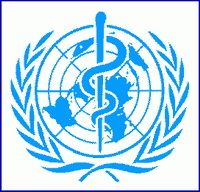World Health Organisation: H1N1 Death Rate Slows Down
The global H1N1 death rate appeared to slow, World Health Organisation data showed Friday. Meanwhile, more than 6,250 people have died in the swine flu pandemic worldwide .

The number of deaths from the A(H1N1) pandemic in the week to November 8 grew by about 179, against 224 a week earlier and a leap of about 700 in the last week of October.
The pandemic now stretches across 206 countries or territories worldwide, the WHO added in a statement on its website.
The UN health agency said the influenza season showed signs of peaking in North America, but was intensifying across much of Europe and Central and Eastern Asia.
"Very intense and increasing influenza activity continues to be reported in Mongolia with a severe impact on the health care system," it added, AFP reports.
It was also reported, about 22 million Americans have become ill with pandemic H1N1 influenza in the past six months and 3,900 have died, according to new estimates by the Centers for Disease Control and Prevention.
The number of pediatric deaths -- about 540 -- is four times as high as the number that physicians, hospitals and health departments had reported to the public health agency in Atlanta.
The new estimates, drawn from detailed surveillance and record-checking in 10 states, sketch the most detailed picture by far of the national toll from the new flu strain that emerged in California and Mexico in April.
"We feel we're finally able to update the public on how big a toll this virus is having so far," Anne Schuchat, a CDC physician helping to run the federal government's pandemic response, said Thursday. "I am expecting all these numbers, unfortunately, to continue to rise,” The Washington Post reports.
msnbc.com quoted Dr. Georges C. Benjamin, Executive director of the American Public Health Association, as saying, "Since March when H1N1, also known as swine flu, first emerged, U.S. health officials have acted quickly and effectively to keep the public informed, learn about the virus, and minimize its spread and negative outcomes. This transparency and coordination between agencies has been a hallmark of the flu response since the beginning of the outbreak and has led to an honest conversation with the American people about the risks of and preparation for H1N1.
Thanks to effective planning, public education and communication, demand for the flu vaccine has never been higher. People understand the risks and have responded in kind. The public health system — a system that suffers from long neglect and a resource-starved infrastructure — has accomplished this not just for one, but for two diseases at the same time: seasonal and pandemic flu. It’s an especially extraordinary achievement given the current economic environment," msnbc.com reports.
Subscribe to Pravda.Ru Telegram channel, Facebook, RSS!





